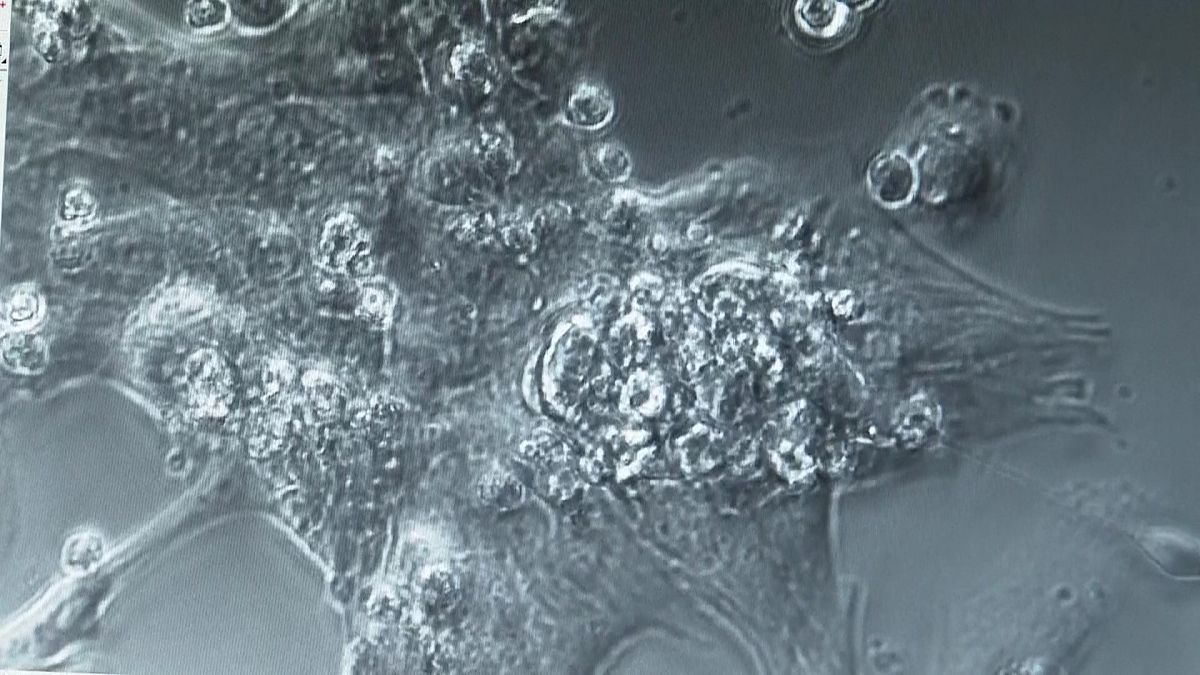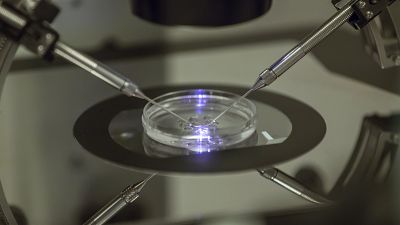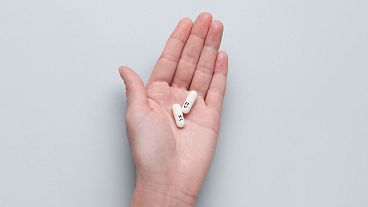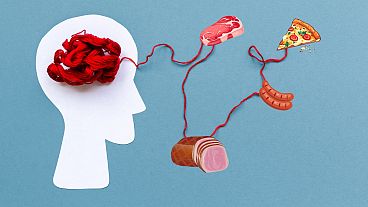The lab-grown hearts, called organoids, are made from human stem cells, and destroyed after 28 days.
Scientists are growing heart cells in the laboratory to develop an AI tool that can detect disease in heart cells more quickly.
The team at the University of East London is looking at how cells in the heart become defective during ageing.
"One of the hardest things with the heart is its low regenerative capacity. So the heart has a turnover of heart cells, at a very low rate of 1 per cent, and by the time we reach 80 years of age that significantly decreases by almost half," said Prashant Jay Ruchaya, a cardiovascular scientist at the University of East London.
"So, trying to find ways of preserving the heart cells that aren't yet damaged is very important because once they do become damaged it’s very hard for that to become a reversible process".
The lab-grown hearts, called organoids, are made from human stem cells, and destroyed after 28 days.
The hope is to develop AI software that recognises the way the heart relaxes and contracts in minute detail in ultrasound or MRI images. This relaxing and contracting of the heart is called systole and diastole.
In a novel attempt, the research team is trying to mimic the heart’s blood-pumping function by looking at a series of systole and diastolic contractions and measuring their velocity and pattern.
AP to spot senescent cells
"In integrating that into AI, we're able to look at very intricate changes in the way systole and diastole take place. We can predict which of these [hearts] will age healthily versus which of these will age detrimentally by looking at the physiological changes that these heart cells undergo with time".
Much of the focus on heart failure has been on coronary heart disease, which is the main cause of heart attacks. It occurs when blood vessels supplying the heart become clogged with cholesterol and other substances.
While the current interventions allow heart patients to live longer with heart problems, experts say the patient will eventually end up with heart failure.
If they can look into ways to remove the heart cells, they can keep it functioning, Ruchaya says
The research team is also developing AI to spot senescent cells in the heart.
Integrating AI with MRI and ultrasounds
According to the US National Cancer Institute, too many of these old cells build up in organs like the heart and remain active, which can release harmful substances, causing inflammation and damage nearby healthy cells.
"If we can identify ways of trying to reverse those detrimental or remove those detrimental cardiac heart cells, those cardiomyocytes, we hope to be able to keep the heart functioning as we want it to," said Ruchaya.
The hope is even to identify patients who would benefit from drugs designed to eliminate potentially harmful old cells. The research team is currently experimenting with the drugs on the lab-grown heart cells.
"Our next hope is to take that now more to the bedside in looking at the clinical side of this. So using ultrasounds or MRI imaging to integrate the AI into those sorts of images and almost mimic what we've done here, but then using clinical images and so it will, it certainly has a lot of hope and promise to be used in the future," said Ruchaya.
For more on this story, watch the video in the media player above.



